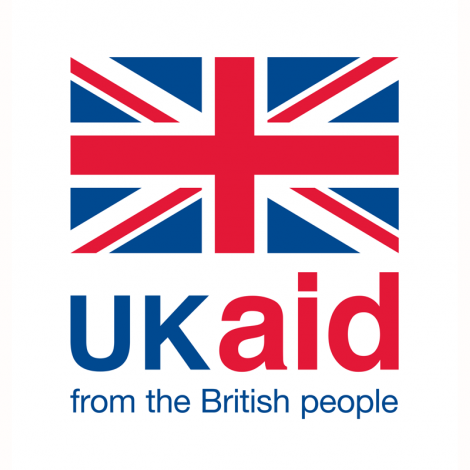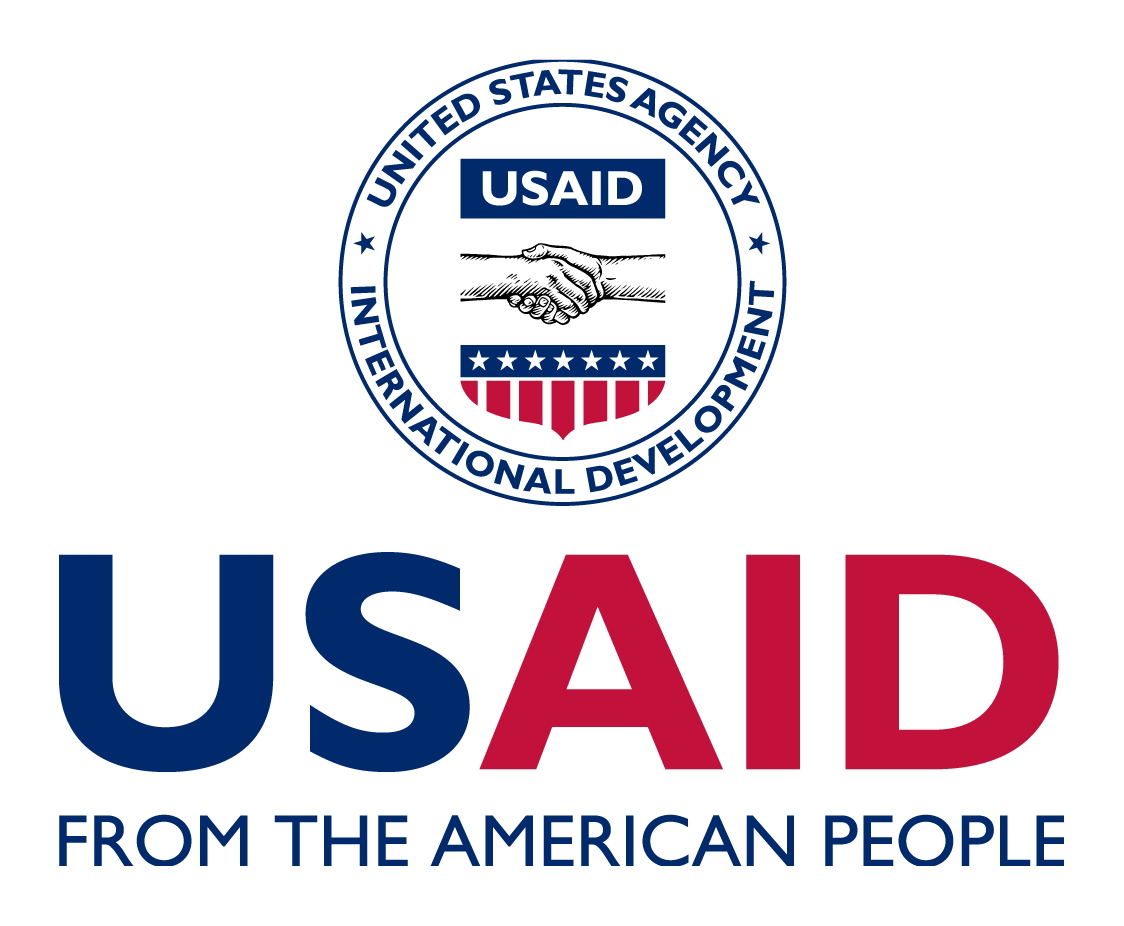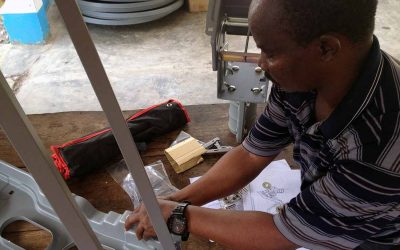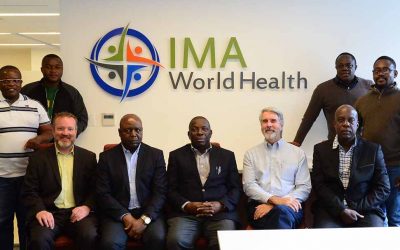dhis2
Routine data for better management of health programs.What is dhis2?
The District Health Information System 2.0, known as DHIS2, is an open source health data management system used in more than 50 countries across the globe to collect data on national public health statistics.
Timely and routine access to data is necessary for all health systems to improve decision making and guide resource allocation. ASSP, and later its follow on project, ASSR, used a health systems strengthening approach that identified stakeholder needs and capacity. Then emphasized data quality and security to meet those needs. The focus was on the end goal: using data to improve planning, management, and health outcomes. ASSP helped the Congolese government to improve capacity and increase the use of its national health information system, or SNIS. In addition, it addressed facility level gaps such as equipment, training, and skills to analyze data at the health zone level. Perhaps the most pressing challenges for data collection are the geographic barriers and technological limitations in the DRC. As a result, many health facilities still use paper-based systems that limit timely access to data.
implementing DHIS2 in the DRC
ASSP worked with the Ministry of Health, or MOH, to strengthen the National Health Information System, or SNIS. They built human resource capacity, infrastructure, and information sharing platforms to improve data dissemination and use for decision-making. ASSP worked closely with the MOH to roll out DHIS2. As a result, all 52 ASSP health zones are submitting more timely, accurate, and transparent data. IMA also provides technical assistance to the MOH for implementation in the remaining 474 health zones that are not covered by ASSP.
Number of health zones with a DHIS2 data quality score of 80% or more on the data quality reporting appraisal scheme during ASSR, 100% of target
Key Achievements
Increased Infrastructure
In January 2017, with technical assistance from ASSP, the MOH launched a revised version of the monthly reporting forms used by health facilities. During that quarter, a marked increase in data quality scores was noted for all ASSP health zones with 46 health zones reaching a score of 80% or more, exceeding the quarterly target of 28. In addition to being more concise, these new forms incorporated indicators from vertical programs such as the national vaccination program and malaria programs in efforts to reduce the existence of parallel reporting systems.
IMA instituted a VSAT-linked system that tracks daily internet availability in each of the ASSP zones, helping monitor health facilities’ ability to submit data using DHIS2 and establish baseline internet access for any future projects.
Routine Data Acquisition and Use
In the last quarter of year five, 1,824 health facilities were submitting routine monthly reports using DHIS2. This is more than 100% of the cumulative project target. It represents an increase of 74% compared to the first quarter of year three.
In 2017, an average of 92% of health facilities submitted reports through DHIS2 each month.
ASSP used DHIS2 to analyze and send feedback reports to Provincial Health Information Officers. These can be used for dialogue for health service delivery improvement.
The project also set up dashboards by program area: service utilization, reproductive health, vaccination. Thus simplifying data analysis for provincial and health zone staff.
Building Capacity
ASSP trained more than 500 people in 52 health zones in DHIS2.
The project also played a significant role in supporting the Ministry of Health in delivering training to health care workers in the rest of the country.
ASSP conducted three VSAT installation and maintenance trainings for provincial technicians. They now serve more remote parts of ASSP-supported provinces. All health zones have been switched to a new internet service provider. The new set-up offers an unlimited internet connection. But only to four pre-approved computers and laptops operating in the health zone office.
Going the Extra Mile
The ASSP team has also provided surveillance and data management support for outbreak response. In May 2018, four members of the ASSP staff were requested by the Ministry of Health to support critical Ebola data visualization work. This work included support to set up the electronic database to capture patient and contact data. They also facilitated the production of line listing and data dashboards to support on-going monitoring of the outbreak.
COVID 19 Response
The project provided surveillance tools to health zones for reporting. 185 cells phones were purchased for health facilities to report surveillance data using DHIS 2 Tracker. Training in surveillance reporting and DHIS 2 Tracker is scheduled to start soon now that the MOH has approved the dual use of both DHIS 2 Tracker and eWars from the WHO to report and trace Covid-19 alerts.
The project provided subsidies to conduct response activities including alert validations, contact tracing and monitoring, and sample collection and transfer to approved labs. Last week in total 2,474 alerts were validated out of 5,957 investigated and 3,886 contacts were seen out of 4,788 being monitored.
cell phones purchased for health facilities

ALERTS VALIDATED OUT OF 5,957 INVESTIGATED IN ONE WEEK
Increasing Access to Health Care
Read more about how ASSP is contributing to improved health by increasing access to health care.
read more about our work to Implement DHIS2
Publications
London School of Hygiene & Tropical Medicine Health Policy and Planning: How the introduction of a human resources information system helped the Democratic Republic of Congo to mobilise domestic resources for an improved health workforce (link)
ASSP Project Ensures Health Zones Stay Connected In DR Congo
Who knew that working with information management systems would require the skills of an...
ASSP Staff Enlisted To Aid In Response To Ebola Outbreak In DR Congo
An electronic database for Ebola Response Written by Linda JamesIMA World Health Four members of...
Creating a national health information system in DRC
IMA World Health has been working with the Ministry of Health in the Democratic Republic of Congo,...
QUICK CONTACTS
Recent Posts
Quarter 1 Results
Number of pregnant women who received three doses of IPT while attending antenatal care: 58,495Number and percentage of 1-yr-old children vaccinated against measles: 78,123Number of Couple Years of Protection (CYPs) achieved through family planning service provision:...
Saved by my Son: A Tushinde Ujeuri Success Story
"The support from the Tushinde program has restored my will to live." Tushinde Ujeuri Project brings hope to one survivor of sexual and gender-based violence in DRC It was mid afternoon, and my 10 year-old son and I were walking home from working in the fields. When...
Combatting Malnutrition in DRC: A Nutrition Success Story
Community relays in Ndesha, Kasai Central are successfully combatting malnutrition in the DRC thanks to ASSP's nutrition training. Combatting Malnutrition One Maman at a TimeMado Betu was a young child of two years and four months but was frail and unable to walk when...





